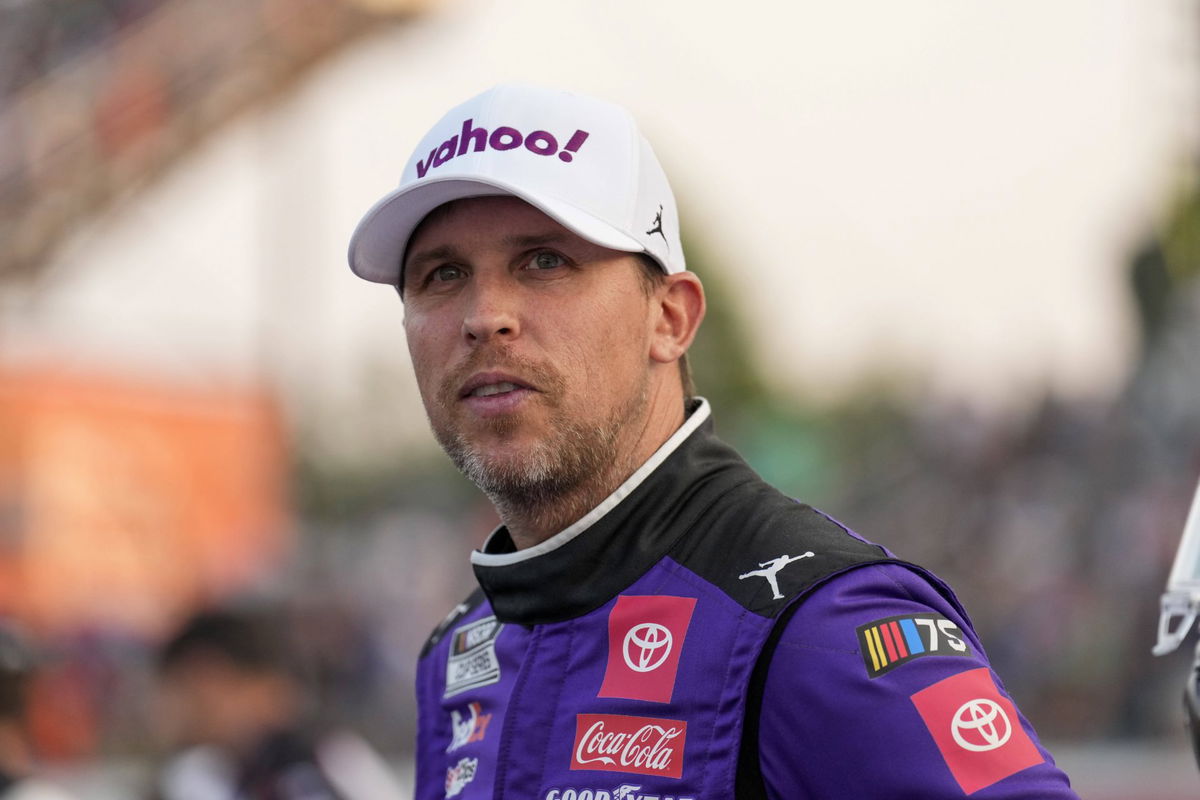
Imago
NASCAR, Motorsport, USA NASCAR All-Star Race May 21, 2023 North Wilkesboro, North Carolina, USA NASCAR Cup Series driver Denny Hamlin 11 during the All Star Race at North Wilkesboro Speedway. North Wilkesboro North Wilkesboro Speedway North Carolina USA, EDITORIAL USE ONLY PUBLICATIONxINxGERxSUIxAUTxONLY Copyright: xJimxDedmonx 20230521_ams_db2_145

Imago
NASCAR, Motorsport, USA NASCAR All-Star Race May 21, 2023 North Wilkesboro, North Carolina, USA NASCAR Cup Series driver Denny Hamlin 11 during the All Star Race at North Wilkesboro Speedway. North Wilkesboro North Wilkesboro Speedway North Carolina USA, EDITORIAL USE ONLY PUBLICATIONxINxGERxSUIxAUTxONLY Copyright: xJimxDedmonx 20230521_ams_db2_145
It’s just baffling how much NASCAR has changed in a decade. There was a time when mechanics and crew chiefs bent the rules to get that marginal advantage on the racetrack. You know the old saying, “If you ain’t cheating, you ain’t trying,” and this couldn’t be truer for NASCAR. Well, things started spiraling down when NASCAR decided to bring in the Next Gen car, and along with it came the idea of parity racing.
Watch What’s Trending Now!
Teams couldn’t make parts of the race cars in their shop; they would now need to source it from a NASCAR-certified third-party dealer. Not to forget, with the new car came data, and SMT data started to dictate the play on the racetrack. However, the biggest difference that caught everyone’s attention was the reduced horsepower. From a blistering 900 horsepower in 2014, the engines on NASCAR’s newest mean machine were restricted to 670.
It is important to note that in 2014, after winning the race at Michigan Speedway, Jeff Gordon took part in a special test session where he tried a new package. And the speeds on his race car were reaching 225+ mph into turn 1. Thanks to parity, we now have a broken superspeedway-style racing where everyone saves fuel and waits for the ‘big one’ to erupt at the end of the race.
ADVERTISEMENT
NASCAR needs more power
The easy fix to these woes is a bump in engine power. Denny Hamlin, who has been a long-time advocate for this change, said all NASCAR needs to do is make a phone call, and they can improve the on-track product. “Just call up Doug Yates and TRD and say we’re going to go back to their old 750 plate. It can be done before next weekend.” Even the likes of Dale Jr., Kyle Busch, and Richard Petty shared similar views.
Well, it’s understandable if the veteran drivers are arguing against the modern machinery. But now that sophomore driver Carson Hocevar has joined the group, it goes to show that NASCAR’s problem is rooted in its newest invention. The Spire Motorsports driver isn’t particularly liked on the grid by veterans, like Kyle Busch, but his views seem to align with the old core. The 2024 Cup Series Rookie of the Year is not a fan of having a filter on his views and opinions about major topics surrounding racing. Carson Hocevar’s latest admission has only brought the horsepower debate back into discussion.
ADVERTISEMENT
Taking to X, Carson Hocevar wrote, “someone asked me if i was given a genie to grant me three wishes for our sport what would they be? 1. no smt (no live smt atleast) 2. 30 hours of r&d testing per organization allowed throughout the year at any point until round of 8 starts 3. more horsepower.”
Interestingly, Carson Hocevar wants the teams to develop their own program. Without the sharing of live SMT data, the teams that have cracked the code will have a clear edge on the track. To some extent, this will weed out situations like last year’s race manipulation fiasco at Martinsville. And the increased horsepower will only make racing better. We’ve seen how every team is riding the same wave in terms of strategy or tactics, thanks to live SMT data. It’s almost taking the human element out of racing and letting the data predict the outcome of the race.
ADVERTISEMENT
someone asked me if i was given a genie to grant me three wishes for our sport what would they be?
1. no smt (no live smt atleast)
2. 30 hours of r&d testing per organization allowed throughout the year at any point until round of 8 starts
3. more horsepowera unique question.
— Carson 🅱️Hocevar (@CarsonHocevar) March 27, 2025
With the Martinsville race lined up next, it is the perfect time to talk about how increased horsepower can make a huge difference. Hear it from King Petty himself; this is what he had to say about short-track racing. “Until they give them a little bit of horsepower, at least on the short tracks. Because when the cars get down below them, then the outside groove was so fast. If the guys had a little bit of horsepower. Once they got down there, they could at least come off the corners.”
There’s a genuine concern when drivers across different generations agree on the same problem statements. We do not want another road course event to take up a date from Martinsville or Bristol, right? Richmond Raceway has already taken a bump with NASCAR’s ambitious plans while they ignore the root cause of issues with the Gen 7 car. Every time there’s been a demand or conversation about bumping the horsepower, NASCAR has turned a blind eye. And if we are to go by the latest development, the future of short track racing does look scary, as NASCAR withdrew the only positive change they rolled out last year.
ADVERTISEMENT
Top Stories
New Charter Deal Triggers ‘Financial Frenzy’ as NASCAR Teams Set for Massive Payday
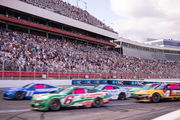
Rick Hendrick Strikes Fear in NASCAR Fans With Chevy’s New “Illegal” Car
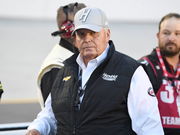
NASCAR Broadcasters Asked to Issue an Apology to Michael Jordan & Co. After Lawsuit Settlement
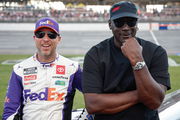
What Settlement Agreement Have Michael Jordan & NASCAR Reached? Everything to Know From Evergreen Charters to Payout
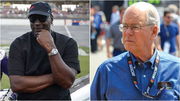
Dale Jr. Goes on a Ballistic Rant Calling Out NASCAR’s Obsession With Manufacturing Drama

No more option tires for short-track races in 2025?
Given that the sanctioning body wasn’t going to budge on the demands of more horsepower, the only way to improve the current state of racing was the tires. For this, NASCAR leaned on Goodyear for producing a tire compound that is soft and wears quickly. This would force the teams into making strategy calls, and drivers would be forced to conserve their tires.
Well, they brought in the option tire at the 2024 All-Star race at North Wilkesboro and again at Richmond last year. Just two sets of soft rubber and six sets of primary, and the idea was to find the difference between how the two tires performed. Daniel Saurez was the biggest winner at Richmond as he found his way up the field with the new rubber, led 93 laps, and picked up a stage win. Suarez also said after the race, “I don’t think there is one negative of today’s race. It was exciting as a driver. I bet you guys loved it. The fans love it. More passing, more action.” So, there was genuine curiosity among the fans on how the tire could change short-track racing in 2025.
ADVERTISEMENT
Surprisingly, NASCAR brought in this softer rubber for the Phoenix race in the spring, and the tire proved to be a success. Like Suarez, this time, it was Ryan Preece who found himself up front as he surged from 33rd to 10th in just 11 laps. It was only sensible for NASCAR to bring this tire to Martinsville and further assess how big of a change it brought. But there came a curveball from the sanctioning body as Bob Pockrass announced that the Martinsville weekend will not feature option tires. Pockrass posted on X, “Tires for Martinsville weekend are the same as November. No two different versions of tires this weekend and not expected to have teams choose among two versions (primary and an option) during a race again this year.”
Not only that, but teams won’t have the option to choose between two tires for the rest of the year. So, is the option tire experiment over? Or has NASCAR finally come to its senses and decided to make the softer option tire the primary for short-track races? Well, for the time being, there’s no clarity regarding the same.
What do you think? Is Carson Hocevar right about increasing horsepower? Should softer option tires be the norm to save short-track racing? Let us know in the comments!
ADVERTISEMENT
ADVERTISEMENT
ADVERTISEMENT
ADVERTISEMENT

